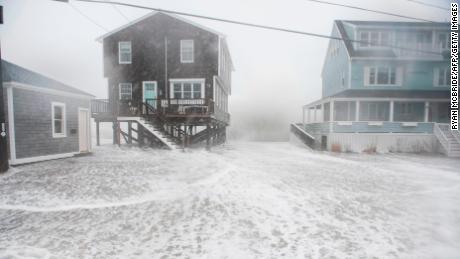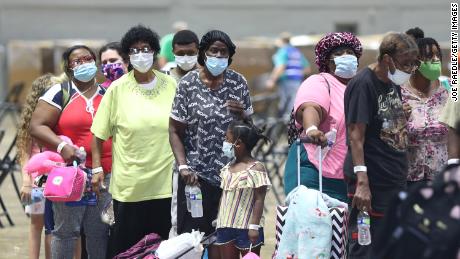Laura hit with intensity the region has not seen in over a century
Communities including Louisiana’s Lake Charles city, some 35 miles inland, are littered with widespread wind destruction. Across the city, roofs and walls are damaged, trees are snapped, twisted and broken; steel poles and lampposts are bent; street signs are torn from the ground.
Wind gusts of more than 120 mph raked that area intermittently for an hour overnight, CNN’s meteorologists say.
“The damage is extensive,” Louisiana Gov. John Bel Edwards told CNN. “It appears now we have more structural damage from the wind” than storm surge.

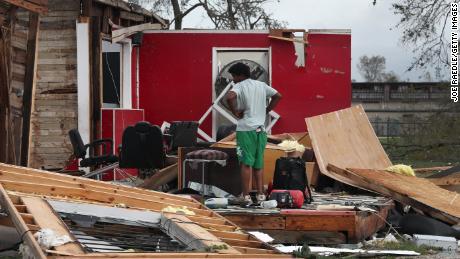
James Sonya surveys what is left of his uncle’s barber shop Thursday in Lake Charles, Louisiana.
More than 1,500 search and rescue personnel, plus 400 boats and high-water vehicles were headed Thursday morning to the worst-hit places, Edwards said. Winds were still too strong for helicopters to fly.
In East Texas, rescue teams were out in the Beaumont, Port Arthur and Orange areas, Gov. Greg Abbott said, noting major evacuations “no doubt saved lives.” Further north, tornadoes were still a threat.
At least one person has died as a result of the storm. A 14-year-old girl died when a tree fell on her home in Louisiana’s Vernon Parish, the governor’s office said.

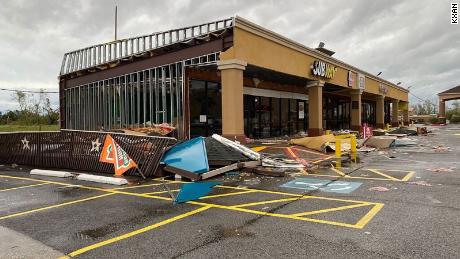
Damage to a building is seen Thursday in Vinton, Louisiana, in this photo from CNN affiliate KXAN.
In Lake Charles, Paul Heard left his house just as the storm was pulling part of the roof off around 1 a.m., he said.
He took shelter in his car. As he watched from 25 feet away, he “could see my roof was heaving up and down several inches.”
“There’s a lot of damage. People are going to need a lot of help around here,” Heard told CNN.

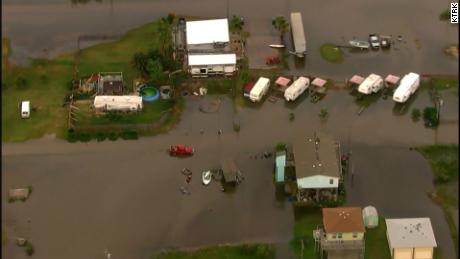
Flooding inundates the Crystal Beach and Galveston areas near Texas’ coast, aerial video from KRTK shows.
Laura tied with a hurricane from more than 160 years ago for the strongest storm to hit Louisiana. The 1856 hurricane also had winds of 150 mph when it made landfall, CNN meteorologist Brandon Miller said.
More destruction is ahead: Parts of northern and central Louisiana still were under a hurricane warning late Thursday morning, as the storm’s center pushed toward Arkansas.
Latest developments
Still a threat: As of 10 a.m. CT, Laura was a Category 1 hurricane with maximum sustained winds of 75 mph winds, headed north. Damaging wind gusts are possible in parts of northern Louisiana and Arkansas though Thursday evening, the National Hurricane Center said.
More rain: From late Thursday morning onward, Laura was expected to drop another 4 to 8 inches of rain across parts of Louisiana, Arkansas and Mississippi. Isolated amounts of 18 inches are possible in Louisiana, the NHC said.
Crawling out from a barricade to find the roof is gone
Details of damage were accumulating as the sun rose Thursday morning.
Water also lapped up against buildings in Sabine Pass, Texas, photos from Getty Images showed.

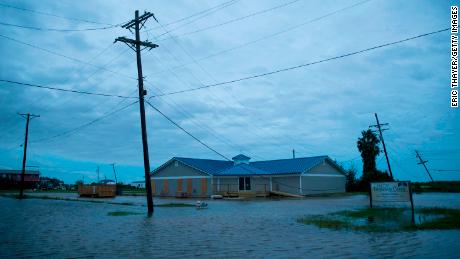
Flooding is seen Thursday in Sabine Pass, Texas.
In Louisiana’s Lake Charles, Tolor White Jr. had dozed off while doing a crossword puzzle under a makeshift “barricade” made of a table and some mattresses. He awoke around 1:15 a.m. to a loud noise, he said.
Part of his roof had been torn off. Water dripped into one of his rooms, and wind had blown out some of his windows.
“I slept through most of it,” he said.
Brandon Clement, a storm chaser, was in a Lake Charles parking lot early Thursday when he saw a RV topple over.
“You could actually hear (the storm) coming … I could see it racing across the parking lot at me … and the RV just went,” he said.

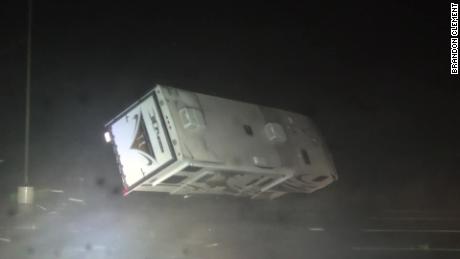
This RV overturned early Thursday in Lake Charles.
Calcasieu Parish, where the city of Lake Charles is located, has about 100,000 residents who were at risk of flooding, parish spokesman Tom Hoefer told CNN.
Just west of Lake Charles, in the city of Sulphur, John Burch’s home lost power shortly after 1:30 a.m.
“There’s a tree down in every person’s yard,” Burch said.
Mat Mcgee told CNN he was near the eyewall of Hurricane Laura when he saw the metal building in front of his barge get ripped apart in Hackberry, Louisiana.
The wind pulled off the roof, the door and knocked over the tower on the site.

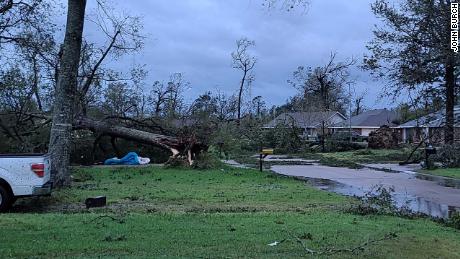
John Burch stood in his street with neighbors as the storm’s eye passed overnight, he told CNN.
The fate of inland residents continued to be a top worry Thursday morning for retired US Army Lt. Gen. Russel Honore, who coordinated the joint military response in 2005 to Hurricane Katrina in New Orleans, then weeks later aided the response to Hurricane Rita, which hit around the same places as Laura.
“We might have gotten a break on the projected surge (from Laura), but I would suspect much of Cameron (Parish along the coast) is pretty bad torn up, particularly all the reconstruction that had happened since Hurricane Rita,” Honore told CNN from Baton Rouge.
Honore feared many who live away from the coast had opted to ride out Laura at home, he said.
“In Lake Charles, a lot of people could be hurt, and as you go further north into Beauregard Parish and up toward Fort Polk, a lot of folks live up there in mobile homes, and I only fear — knowing that Cameron was fully evacuated, a big effort in Calcasieu (Parish) and Lake Charles to get people to evacuated — I hope the same was done further north because this could be very devastating … where people don’t live in very sturdy homes,” he said. “That is my biggest concern.”

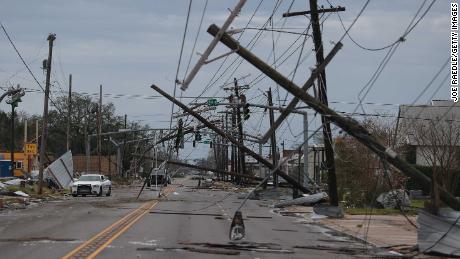
A Lake Charles street is seen strewn with debris and downed power lines Thursday after Hurricane Laura passed through the area.
CNN’s Martin Savidge, Gary Tuchman, Brandon Miller, Joe Sutton, Devon Sayers, Andy Rose, Michelle Krupa, Paul P. Murphy and Dave Alsup contributed to this report.
![]()




